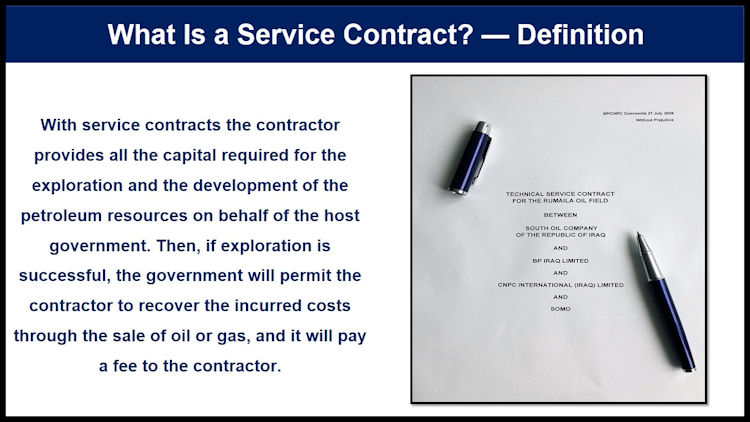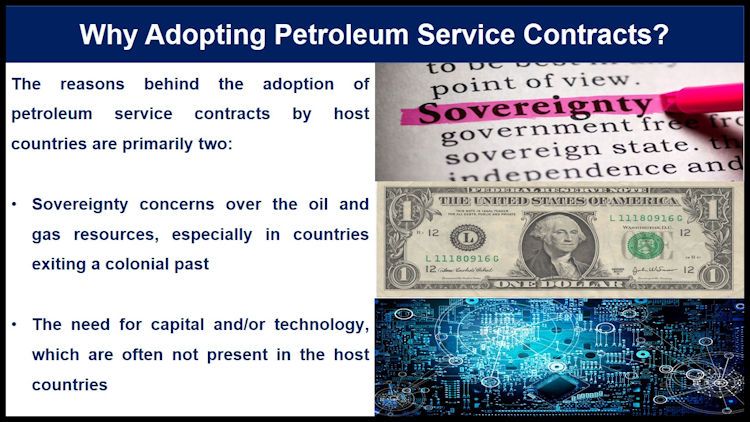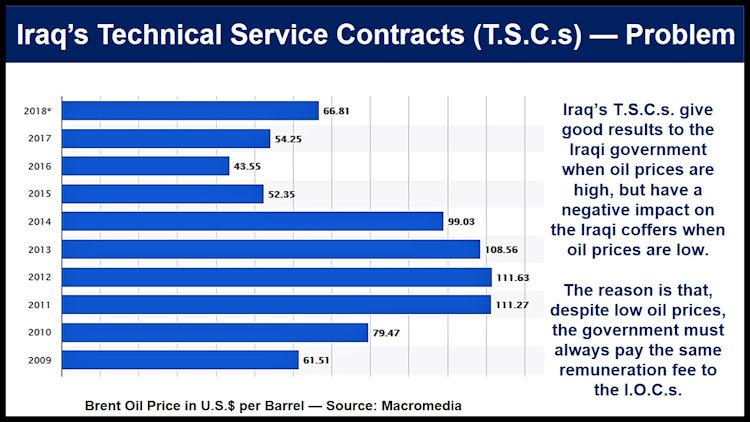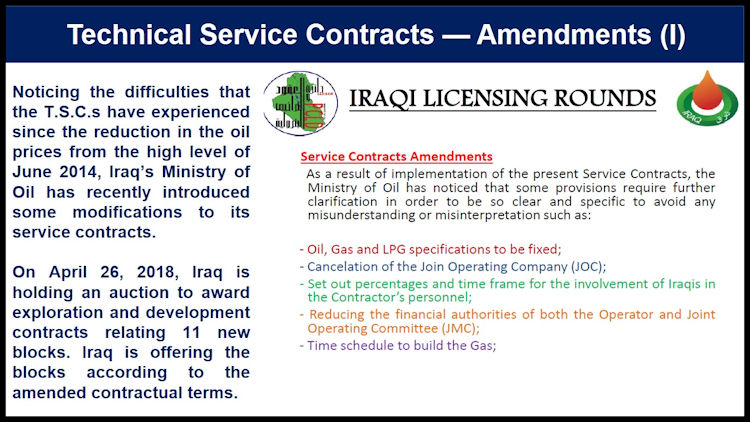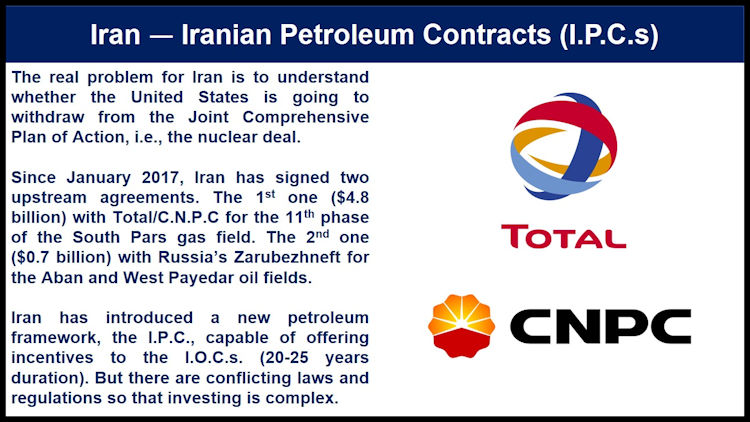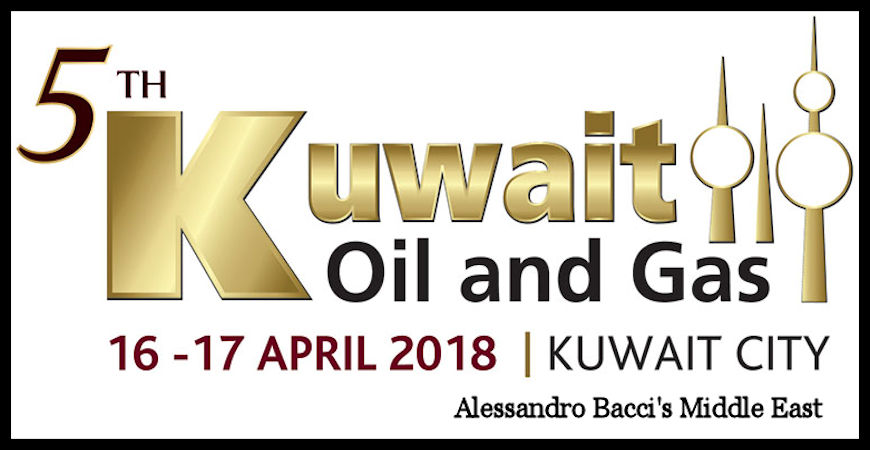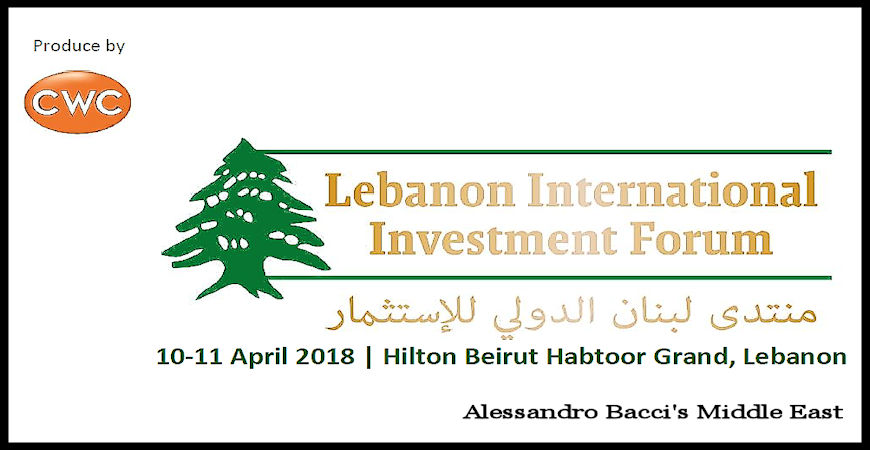The
analysis “Kuwait’s Petroleum Sector: What Is the Right Strategy?” has been written
for the 5th Kuwait Oil and Gas Summit, which is organized by The C.W.C. Group, an energy and infrastructure conference, exhibition and training
company. The 5th Kuwait Oil and Gas Summit will take place in Kuwait
City, on April 16-17, 2018.
April 12, 2018
London, United Kingdom
With
101.5 billion barrels of oil (BP Statistical Review of World Energy 2017), Kuwait
owns the world’s seventh largest proven oil reserves, or 5.9% of the world’s proven
oil reserves. The country’s economy is dominated by the oil sector. In fact, more
than 50% of the G.D.P, 92% of export revenues (from oil and oil products and
fertilizers), and 90% of the government income come all from the oil sector
(C.I.A. World Factbook, 2018). With reference to natural gas, Kuwait, with 1.8
trillion cubic meters (Tcm) of natural gas (BP Statistical Review of World
Energy 2017), on par with Norway and Egypt, owns the world’s 16th
largest proven natural gas reserves, or 1.0% of the world’s proven natural gas
reserves.
Kuwait
has a production capacity of about 3.1 million barrels per day (MMb/d) and an
effective production of about 2.7 MMb/d. Kuwait’s production of about 250,000
b/d at the Wafra (onshore) and Khafji (offshore) fields in the Partitioned
Neutral Zone, which is the border region between Kuwait and Saudi Arabia, has
been shut down since 2015. At the current rate of production, Kuwait’s oil should
last for almost 88 years, while gas reserves for more than 100 years. Kuwait,
as well as the other Persian Gulf producers, has a couple of important
advantages: very low production costs and a geographic position at the
crossroads of three continents (Europe, Africa, and Asia), which permits Kuwait
to easily export oil and oil products to more than one market.
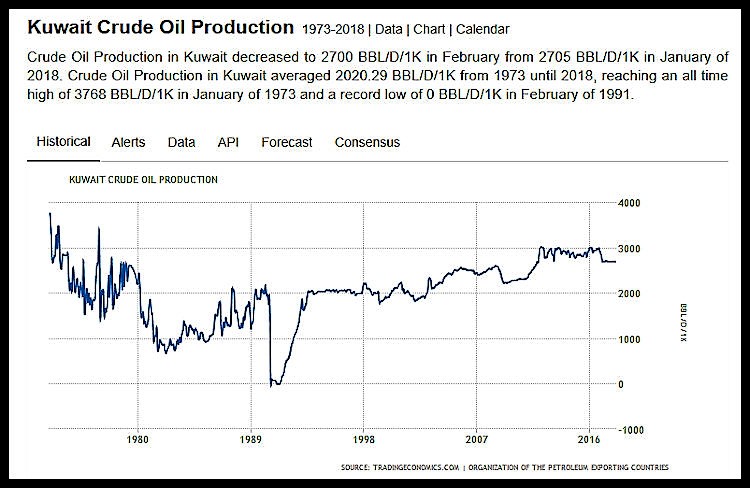
Kuwait
has production costs among the lowest in the world. In fact, it has had until now
production costs of about $8.50 per barrel on average (in specific, $3.70 for
capital expenditures and $4.80 for operating expenditures). Probably, these
production costs will relatively rise in the future because production will
derive from more complex fields. However, because oil is a commodity (despite
different A.P.I. degrees and sulfur content), low production costs are one of
the most important commercial advantages for an oil producer.
At
the same time, thanks to its geographic position, Kuwait may easily export its
oil to the Asia-Pacific region, which receives about 80% of its oil exports (Kuwait’s
overall exports are estimated at about 2.0 MMb/d). Crude oil is primarily sold
on term contracts, and its crude oil exports have been until recently a single
blend of all the Kuwaiti types of crudes, which is called ‘Kuwait.’ This blend
has 30.5 A.P.I. degrees and 2.6% of sulfur content (it’s defined a sour crude).
Presently, with the help of some Asian refiners, Kuwait is testing in Asia whether there
might be some interest in a new Kuwaiti blend called ‘Super Light,’ which has an
A.P.I. gravity of 48 degrees and 0.4% of sulfur content. In addition, in
August 2018, Kuwait wants to launch the blend ‘Kuwait Heavy,’ which has an
A.P.I. gravity of 16 degrees and 4.9% of sulfur content.
So,
Kuwait represents a reliable and secure oil producer, which has been in the oil
business since 1938 when oil was discovered four years after the signature of
the concession in favor of a joint venture between Anglo-Persian Oil Company
(today’s British Petroleum) and Gulf Oil (today part of the U.S. company Chevron).
And, for all these decades, apart for a short hiatus linked to the invasion of
Kuwait by Iraq’s army, Kuwait has been one of the world’s most important and
reliable producers.
However,
because of the evolving energy scenarios linked primarily to geopolitical
considerations, disruptive technologies, and climate change goals, it has
become more difficult for a petroleum-producing country to understand the
future opportunities and challenges concerning the petroleum sector. In
practice, the petroleum industry is in transformation, and all the petroleum-producing
countries (but, it would be more correct to add all the petroleum-importing
countries as well) must learn how to mitigate the present uncertainties. And,
as a producer, Kuwait is not exempt from this difficult challenge.
In
addition, these uncertainties regarding the development of the world’s
petroleum industry are added in Kuwait to an economy that is completely
dependent on the sales of oil and oil products. In fact, despite some attempts,
Kuwait has not succeeded in diversifying its economy and in supporting the
development of the private sector. The public sector employs about 74% of the
citizens. Be it clear that these economic features are quite widespread among
all the Persian Gulf producers (neighboring Iraq is experiencing the same economic
problems in addition to high costs linked to the reconstruction after the ISIS
insurgence).
The
level of a country’s petroleum dependence can be measured according to several
different methodologies. In any case, three good indicators may be: petroleum
activities representing a sizable share of G.D.P., petroleum rents representing
a sizable share of G.D.P., and petroleum exports representing a sizable share
of the merchandising exports. In brief, Kuwait has high values in relation to
all these three indicators.
 |
What Did Kuwait Export
in 2016? — Source: The Atlas of Complexity, Harvard University
|
The
government had passed its first long-term economic development plan in 2010.
The idea was to spend up $104 billion over just four years with the specific
goal of diversifying the economy, bringing investments in Kuwait, and
increasing the private-sector share of the economy. Many of these projects
never materialized because of the uncertain political situation and the delays
in awarding the contracts.
In
Kuwait, diversification is not happening primarily for two reasons. First, because
it’s never an easy task to diversify the economy of a commodity-producing
country. And this is true no matter in what part of the world we are. Also, for
a country like Norway, which is normally considered the model of a successful petroleum-producing
country, diversifying the economy (although not completely) has not been an
easy task, and several specific (of the Norwegian state) factors helped Norway
reach this goal. In fact, for a commodity producer, there is always, behind the
corner, the risk of facing two dangerous phenomena, i.e., the Resource Curse
and the Dutch Disease.
Second,
diversification is not happening in Kuwait because of the difficult
relationships between the National Assembly, on the one side, and the executive
branch, on the other side. Historically, in Kuwait, the relationships between
these two institutional bodies have never been simple, and they have stymied
many economic reforms proposed over the years. A strong confrontation between the
National Assembly and government concerning the way to deal with the management
of the natural resources according to the interpretation of the text of the
Constitution had already materialized in the 1960s.
However, many petroleum-producing countries find
themselves in dire financial straits after an oil’s price fall, as it occurred
in 2014. So, if a country’s economy is based on just a single pillar, when this
pillar is not any longer stable, there are bad economic consequences for the country.
In practice, a single-pillar economy has lower resilience against shocks
affecting its single pillar than the resilience of an economy based on several
different pillars. And this is what exactly occurred to Kuwait. The adage ‘never
put all the eggs in a single basket’ is true for private investors as it is for
countries.
In fact, in 2015, for the first time in 15 years,
Kuwait realized a budget deficit. The following year, the deficit increased to
16.5% of the G.D.P. Then, in 2017, the deficit decreased to 7.2%. At the same
time, the government issued $8 billion’s worth of international bonds—there is
a trend in this direction in the Gulf Cooperation Council (G.C.C.) region. Kuwait’s
Fund for Future Generations, the sovereign wealth fund, in which each year Kuwait
saves at least 10% of government revenues, helped cushion Kuwait against the
impact of the reduction in the oil prices. Without capital expenditures and
social allowances, the latter make up two thirds of the private sector
salaries, the economy would have slowed more consistently.
Considering the above points, it appears clear
that Kuwait’s overall economic development must pass through the
diversification of the economy and a boost in private-sector hiring. However,
as economic literature has well explained, this is easier said than done,
especially in a country subject to harsh weather conditions as Kuwait is.
Probably, the best route would be the development of industrial clusters linked
to Kuwait’s characteristics and not a top-down industrial policy established by
the government.
As the theory of cluster development explains,
clusters pursue competitive advantage and specialization, and they do not
attempt to replicate what is happening in other locations. With clusters,
[g]overnments – both national and local – have new
roles to play. They must ensure the supply of high-quality inputs such as
educated citizens and physical infrastructure. They must set the rules of competition
– by protecting intellectual property and enforcing antitrust laws, for example
– so that productivity and innovation will govern success in the economy.
Finally, governments should promote cluster formation and upgrading and the buildup
of public or quasi-public goods that have a significant impact on many linked
businesses. This sort of role for government is a far cry from industrial
policy. (Porter, 1998)
So,
branching out to other industrial sectors according to a cluster logic may be
the correct way. Kuwait might be the location for clusters related to technologies
linked to living in hot environments. For instance, technologies linked to
water desalinization, solar energy, and agriculture in arid lands.
Instead,
with reference to the petroleum sector, the correct
strategy, despite all the present uncertainties, must be continuity with the
past. Here the logic must be to understand what Kuwait can and cannot do now
and in the next years. In fact, notwithstanding all the ongoing discussions,
it’s impossible for Kuwait not to rely on the revenues deriving from the sale
of oil, which has been for the last decades and will continue to be, at least in
the near future, the country’s most important asset. As of today, without oil
revenues, numbers tell us that Kuwait’s economy would come to a grinding halt. Plus,
it’s important to understand that diversifying the economy would take years
before making a dent on the current structure of Kuwait’s economy, which is
dependent on the export of oil and oil products.
In 1997, Kuwait formulated ‘Project Kuwait,’ at
that time a $7 billion 25-year plan having the goal of increasing the country’s
oil production capacity (and compensate for the decline at the supergiant Burgan
field) with the help of international oil companies (I.O.C.s). In specific,
Kuwait wanted to initially increase output at five northern oil fields—Abdali,
Bahra, Ratqa, Raudhatain, and Sabriya—from a production rate of about 650,000
b/d to 900,000 b/d within the following three years. Then in mid-2000s, the basic
idea of the project became to increase the country’s oil production capacity to
4.0 MMb/d by 2020.
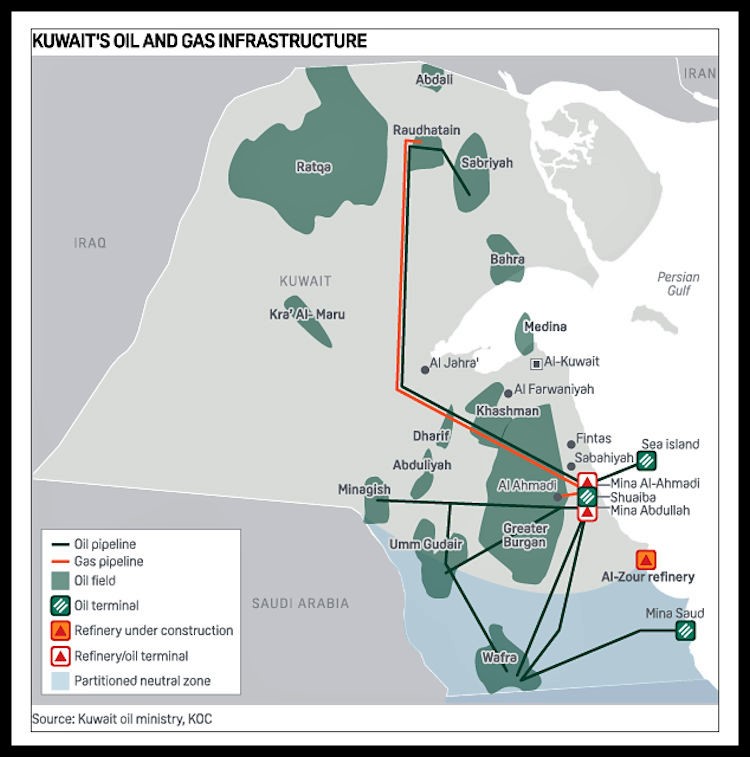
This whole project has not materialized until now despite
the authorities have always reaffirmed until recently that this is still an
achievable target. The main reason for the delay is the political opposition to the
I.O.C.s and to the contractual structure offered to them. Many of the new
projects have faced relevant delays because of the National Assembly’s
opposition to the envisaged new contractual structure. For more information
about Kuwait’s petroleum contracts, please see: BACCI, A., Kuwait's Oil and Gas Contractual Framework
and the Development of a Modern Natural Gas Industry (Dec. 2011).
In brief, in order to bring in Kuwait the I.O.C.s, at
the end of the 2000s, Kuwait started to offer Enhanced Technical Service Agreements
(E.T.S.A.s), which allow the foreign companies to provide technical expertise
(needed especially for the more challenging fields) and management expertise for
a fee. Kuwait’s politicians have always been quite skeptical about the
transparency of the E.T.S.A.s and whether what Kuwait receives in exchange for
these services is fair. In any case, in the past ten years, Kuwait has signed
some E.T.S.A.s with Shell, BP, and Total, although the development of the
contracts has been marred by several missed deadlines.
Kuwait
won’t probably achieve the target of 4 MMb/d by 2020, but Kuwait Petroleum
Corporation (K.P.C.) has recently affirmed that it intends to invest more than
$500 billion to push its petroleum production to 4.75 MMb/d by 2040. Whether
the 4.75 MMb/d target includes Kuwait's production from the neutral zone is not
clear. In any case, this increase will derive mostly from northern Kuwait,
which is currently producing 1 MMb/d. In
specific, the company should spend $114 billion in capital expenditures over
the next five years and additional $394 billion after the initial five years up
to 2040.

In
practice, although the petroleum market has changed consistently over the past
10 years, Kuwait proposes again an oil-production expansion plan. And, despite
that Kuwait is subject to OPEC quotas and that OPEC and non-OPEC members are
currently restraining their crude oil production to support oil prices, there is a logic
behind this choice. And Kuwait is not the only country carrying out this type
of plan. In fact, throughout the Persian Gulf oil-producing countries, there is
a medium-term trend toward expanding crude oil production (see for instance the
expansion plans relating to Iraq and Iran as well).
With
reference to oil, all these countries share the same advantages that Kuwait
has, i.e., low crude-oil production costs and an interesting geographic position
capable of serving more than one market (the favored one is the Asian market
now). And because oil is a commodity (let’s put aside the differences relating
to A.P.I. degrees and sulfur content) and considering the two above-mentioned
advantages, if oil markets were not affected by distortive political and
economic barriers, it would be evident that the most obvious oil producers in
the world should always be the Persian Gulf producers and Russia as well. Think
of David Ricardo’s theory of comparative advantage. So, summing up, this
medium-term trend tells us that these countries, including Kuwait, are betting
on cashing in on these two mentioned advantages, if not today, on a medium-term
horizon.
What
Kuwait is slowly trying to achieve is probably the correct strategy under the
present uncertain circumstances. In any case, selling oil and oil products will
require a more detailed attention to the whole petroleum chain, from upstream
to downstream. In fact, competition among producers is increasing both at the
regional and at the international level with the specific goal of capturing
opportunities in the market. For sure, Kuwait is well positioned to take
advantage of the growing oil demand occurring in Asia, but this is true for all
the other Persian Gulf producers as well, and it seems that in the future also
oil producers from other geographic areas might try to sell oil in Asia. For
Kuwait, enhancing customer relationships will be crucial to maintain prearranged
fixed sales agreements, which guarantee a certain cash flow. Because oil is a
commodity, differentiation strategies are not easy to implement. One route
might be to have an enlarged role in relation to oil trading.
At the
same time, Kuwait must necessarily continue to increase its production of non-associated natural gas; its associated natural gas production makes up 80% of the total natural gas
production. According to BP Statistical Review of World
Energy 2017, Kuwait in 2016 produced 17.1 billion cubic meters (Bcm) of natural
gas, while it consumed 21.9 Bcm. The goal is to
increase non-associated gas production to 2.5 billion cubic feet a day (Bcf/d)
in 2040 from the level of 0.5 Bcf/d in mid-2018. Kuwait needs large supplies of natural gas to generate
electricity and to carry out water desalination, petrochemical production, and
enhanced oil recovery to boost oil production. In
specific, the electricity sector often fails to generate enough electricity to
meet peak demand.
Moreover,
because Kuwait for a good share produces electricity by burning oil and other
liquids, which in this way are not exported, Kuwait is currently losing
revenues from the missed sales of this oil and other liquids. More domestic
natural gas production from non-associated gas fields might free some
quantities of oil for export with consequently the result of increasing the
revenues for Kuwait. The need to increase natural gas availability is quite
urgent because domestic energy
demand is going to double between 2017 and 2030.
Kuwait has been relying on L.N.G. imports since
2009 when natural gas consumption overpassed domestic production, and this
trend seems not to abase. In December 2017, K.P.C. signed a 15-year L.N.G. gas
import deal with Shell (the deal will start in 2020) to help Kuwait to continue
to close the gap between its gas demand and its gas production. At the end of
the 2000s, the country started to develop, although slowly, its non-associated
gas reserves, primarily from the Jurassic non-associated gas field (technically
quite challenging) in norther Kuwait. This field was discovered in 2006 and has
35 Tcf of estimated reserves. In 2017, the government approved the second
phase of the North Kuwait Jurassic Gas project, and, finally, this year three early
production facilities, Sabriya and Umm Niqa fields, East Raudhatain field, and
West Raudhatain field are coming online. Together, these facilities will produce
200,000 b/d of light crude and 500 MMcf/d of natural gas.



